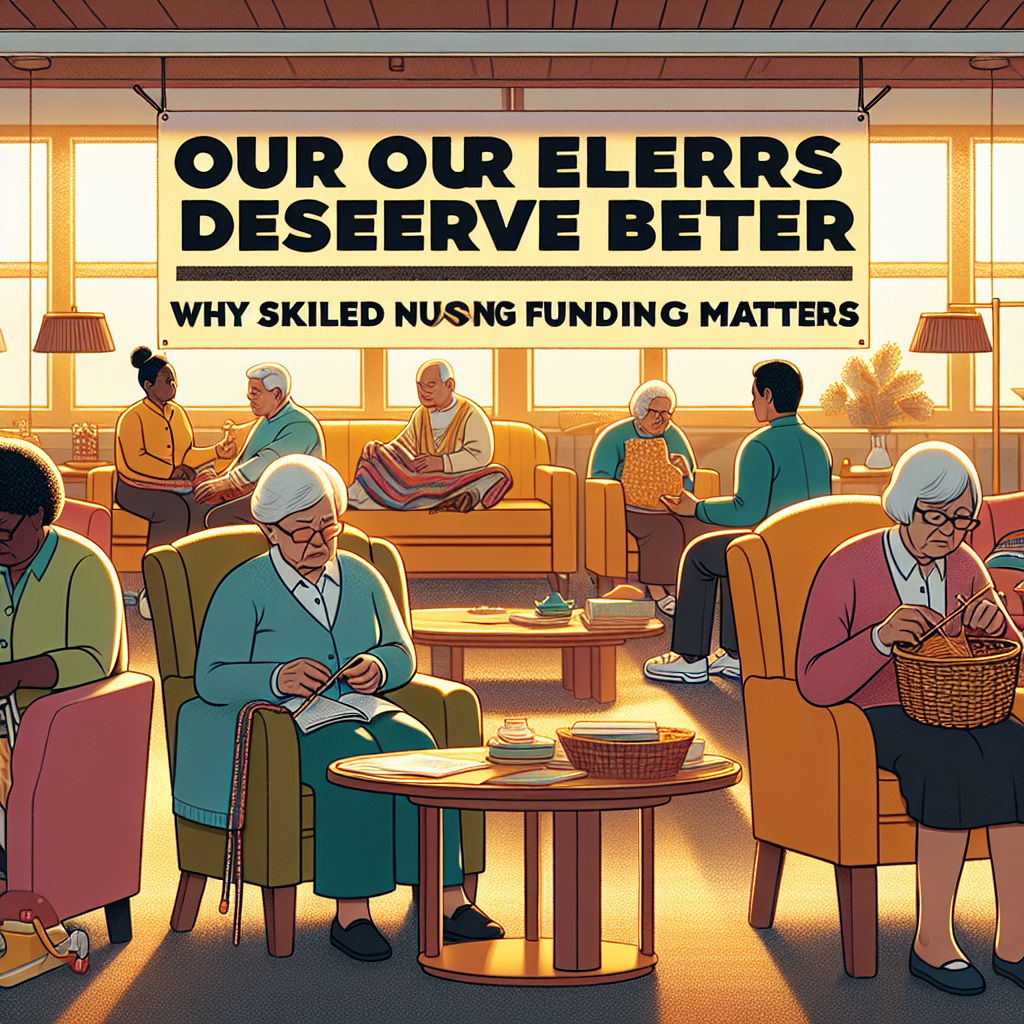New York, NY—As the U.S. population ages, the demand for skilled nursing facilities (SNFs) is increasing, yet funding remains a critical issue. Our elders deserve better care, and experts argue that without proper financial support, our healthcare system is failing its most vulnerable.
The ongoing struggle to provide adequate care for the elderly in skilled nursing facilities is a growing concern. With an estimated 1.3 million Americans currently residing in such settings, according to data from the Centers for Disease Control and Prevention (CDC), the issue has reached a critical juncture. These facilities provide essential care for older adults who require 24-hour monitoring and medical attention—services that cannot be feasibly provided at home for many families.
Financial constraints have long been a significant barrier to improving care standards in SNFs. The American Health Care Association (AHCA) highlights that reimbursement rates from Medicaid, the primary source of funding for skilled nursing care, do not fully cover the cost of caring for residents. “On average, Medicaid reimburses $13 less per day per resident than the actual cost of care,” an AHCA spokesperson noted. This shortfall significantly impacts the ability of facilities to upgrade equipment, hire additional staff, and implement quality improvement programs.
The consequences of inadequate funding extend beyond financial instability for nursing homes. They have a direct impact on the quality of care that our elderly population receives. Staff shortages, a result of tight budget constraints, lead to overworked employees and, in turn, can result in subpar care. Moreover, the limited funds available for facility improvements and staff training make it challenging to keep pace with the evolving needs of residents, particularly those with complex medical conditions.
Experts in geriatric care are calling on federal and state governments to recognize the critical role that skilled nursing facilities play in the healthcare continuum and to increase funding. Without significant investment, these facilities are at risk of falling further behind in their capability to provide high-quality, compassionate care.
Moreover, there’s a growing push for innovative funding mechanisms and increased private investment in the sector. Proposals include incentivizing partnerships between hospitals and skilled nursing facilities to streamline care transitions and reduce hospital readmissions, which are costly to the healthcare system.
“Investment in skilled nursing is not just an expenditure; it’s a commitment to our collective future,” says Dr. Samantha Greene, a gerontologist and advocate for elder care. “We must recognize the value of providing our elderly population with the dignity and quality of life they deserve.”
As the debate over healthcare funding continues, the situation in skilled nursing facilities serves as a poignant reminder of what’s at stake. Our elders, who have contributed so much to our society, deserve better than to be overlooked. It’s time for a concerted effort to change the trajectory of skilled nursing care in America.


